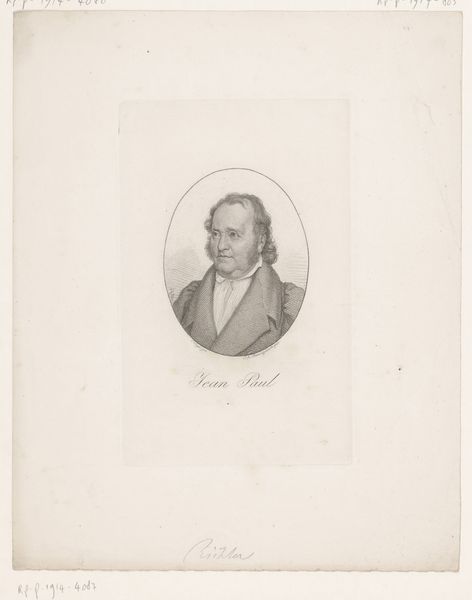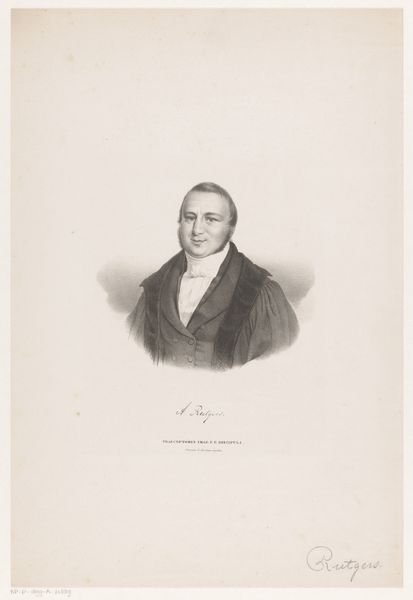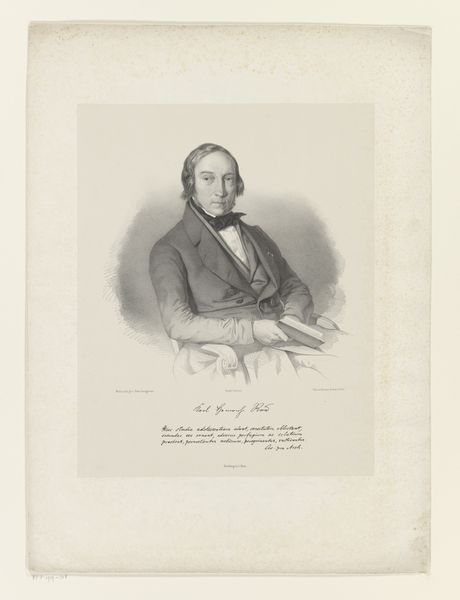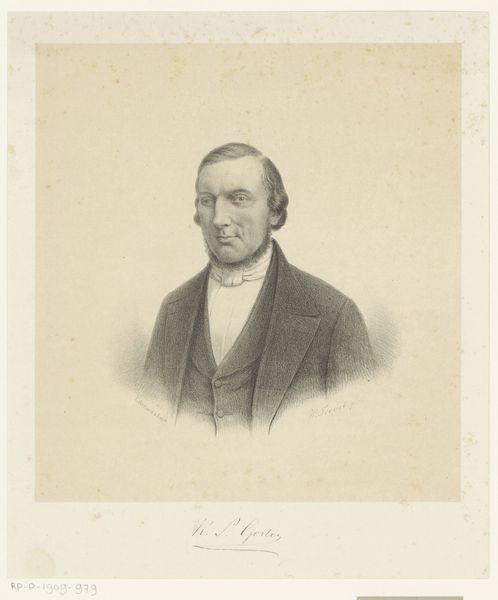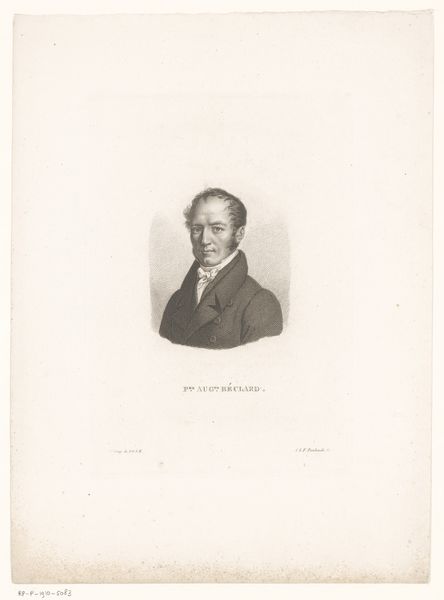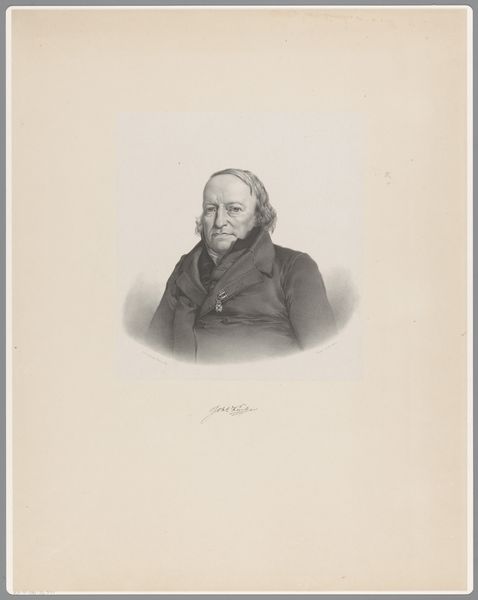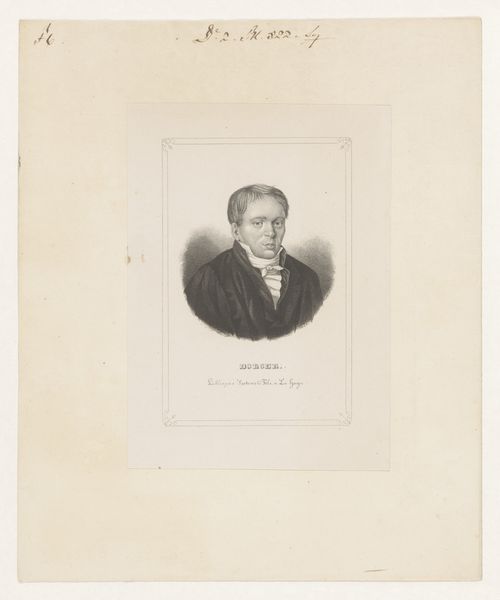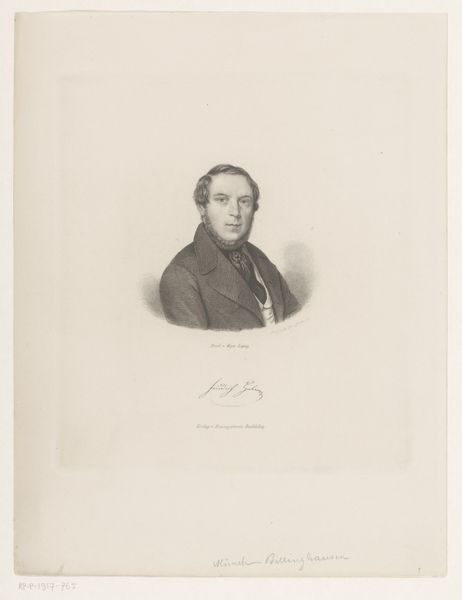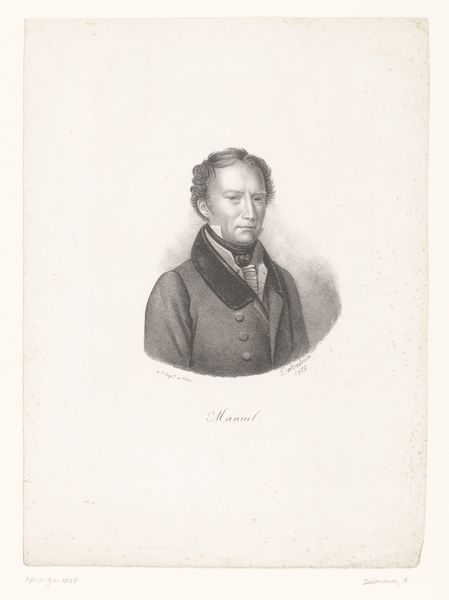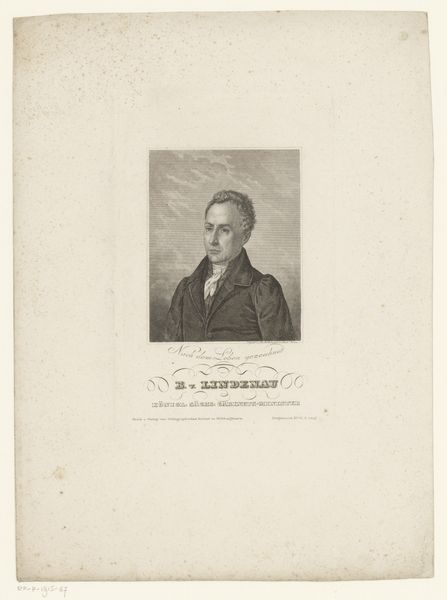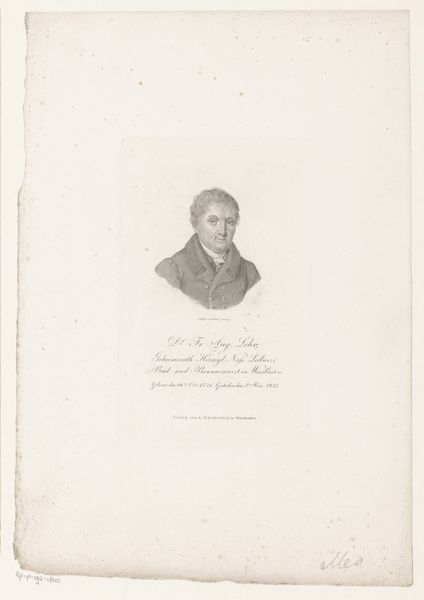
Dimensions: height 185 mm, width 128 mm
Copyright: Rijks Museum: Open Domain
Curator: This engraving, attributed to Carl Mayer and dating from sometime between 1816 and 1868, presents us with a portrait of Cajetan von Textor. Editor: It’s quite striking! There's a somber intensity to the sitter's gaze that is directly confronting, almost accusatory. The print feels sparse, with the subject emerging from this sort of atmospheric gray wash. Curator: Indeed. Cajetan von Textor was a significant figure, holding the title of Hofrath and professorship of surgery in Wurzburg, adding considerable weight to this particular piece, socially. Editor: A surgeon! That explains the intensity. I can’t help but notice the details in his dress. The high collar, the meticulously tied bow. These speak to a sense of order, almost as if mirroring the precise nature of his profession, the practice of surgery. Curator: Precisely! The medium, engraving, chosen for its ability to replicate and disseminate, underscores the artwork's role in visually constructing Textor's professional identity for public consumption. Editor: It really feels of the moment, doesn't it? Look at the carefully rendered details – each line seems deliberate, meant to project respectability and authority. Is there anything known about its original setting? I am thinking of a physician's office. Curator: Though we cannot say for certain where this specific print was initially displayed, engravings like this were often used in learned societies, universities, and sometimes even public spaces, further solidifying the reputations of noteworthy figures such as Textor. Its reproducibility afforded it considerable socio-political currency at the time. Editor: It's fascinating to consider how these seemingly straightforward portraits acted as vital pieces of visual rhetoric, shaping public perception. Curator: Precisely. The symbolism of profession merges seamlessly with political and public life through the medium of visual artwork. Editor: Thanks to our dialogue, I look at this portrait of Dr. Textor in a fresh light. I understand not only the representation but how the image, through time, also echoes social significance and cultural beliefs of the era.
Comments
No comments
Be the first to comment and join the conversation on the ultimate creative platform.

